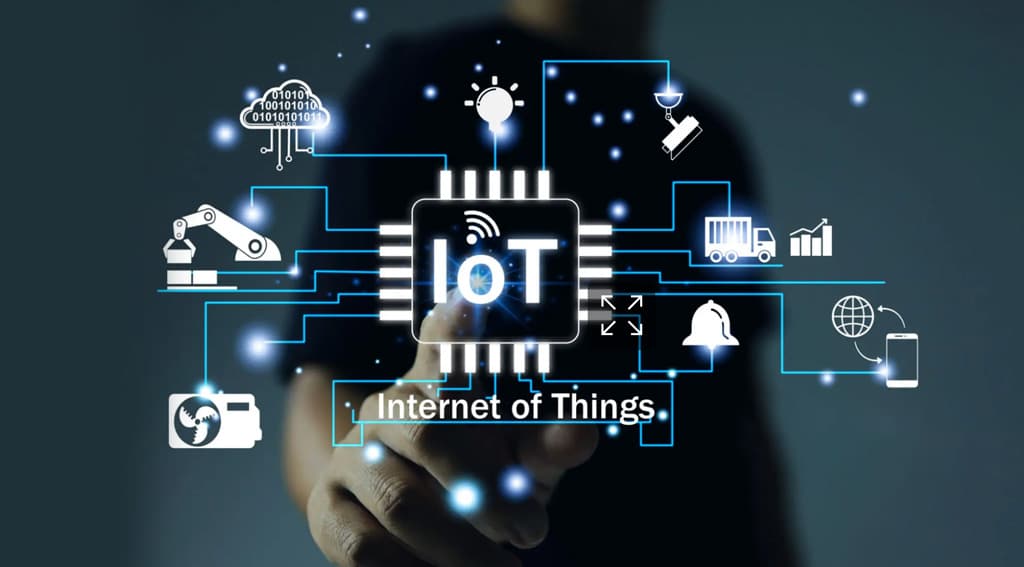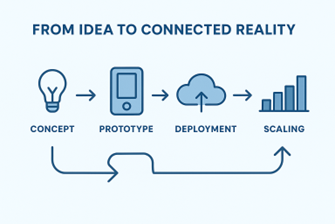
IoT Product Development & Engineering: Transforming Ideas into Scalable IoT Development Projects
Connecting the Dots in the Digital World
The Internet of Things (IoT) is no longer a futuristic concept—it’s the backbone of digital transformation across industries. From smart homes to intelligent manufacturing, connected devices are reshaping how businesses operate and deliver value.
Yet, for enterprises, success in iot development isn’t just about building connected devices—it’s about creating scalable ecosystems where hardware, software, and data work seamlessly together.
That’s the promise of IoT Product Development & Engineering—the structured process of turning innovative ideas into reliable, scalable, and secure connected products that drive measurable outcomes.

Understanding IoT Product Development & Engineering
IoT product engineering blends hardware design, embedded software, and cloud infrastructure into one integrated solution. It’s a multidisciplinary process that ensures devices collect, transmit, and process data securely and efficiently.
Key Components Include:
Embedded Systems: Microcontrollers and sensors that gather data.
Connectivity Protocols: Wi-Fi, Bluetooth, LoRa, or 5G for real-time communication.
Cloud Integration: Centralized data storage and analytics.
Application Layer: Dashboards and mobile apps for user interaction.
Security Architecture: Encryption, authentication, and device lifecycle management.
Each component plays a vital role in shaping the IoT ecosystem—ensuring the end product is reliable, secure, and scalable.
The IoT Product Development Lifecycle
Developing a connected product involves a structured, iterative process that balances innovation with technical feasibility.
1. Ideation and Feasibility
Define the problem your IoT solution aims to solve. Conduct technical feasibility studies to ensure the idea aligns with existing infrastructure and budget constraints.
2. Prototyping and Design
Rapid prototyping helps validate the concept with early users. Engineers build functional prototypes using low-cost sensors and platforms like Arduino or Raspberry Pi.
3. Development and Integration
Once validated, teams design the hardware, develop embedded software, and integrate it with backend systems and cloud services.
4. Testing and Quality Assurance
Rigorous testing ensures reliability under diverse conditions—covering firmware validation, network stability, and security penetration.
5. Deployment and Scaling
After successful trials, the solution is deployed at scale, supported by automated firmware updates and analytics-driven monitoring.
Why IoT Product Development & Engineering Drives Innovation
IoT engineering isn’t just about technology—it’s about creating value through connected intelligence.
1. Accelerated Time-to-Market
Custom frameworks and modular designs enable faster deployment cycles without compromising quality.
2. Enhanced User Experience
Data-driven insights personalize user interactions and improve product usability.
3. Cost Efficiency
Predictive maintenance and energy optimization lower operational costs significantly.
4. Real-Time Data Analytics
Instant insights from connected devices enable smarter decision-making and faster innovation.
5. Scalability and Adaptability
Engineered for growth, modern IoT architectures can scale effortlessly from pilot to enterprise-level deployments.

Common Challenges in IoT Product Development
Despite its potential, IoT development comes with unique hurdles:
Challenge | Description | Solution |
Device Interoperability | Different devices use varied communication protocols. | Adopt open standards and middleware solutions. |
Data Security | Increased entry points mean higher risks. | Implement end-to-end encryption and secure boot mechanisms. |
Power Efficiency | IoT devices often rely on battery power. | Use energy-efficient components and optimize firmware. |
Network Scalability | Connectivity issues arise at scale. | Leverage 5G and edge computing architectures. |
Emerging Trends in IoT Product Development
The next generation of IoT innovation focuses on intelligence, automation, and integration.
AI-Integrated IoT: Merging machine learning with IoT for predictive operations.
Edge Computing: Reducing latency by processing data closer to devices.
Digital Twins: Creating virtual replicas for monitoring and simulation.
Sustainable IoT: Designing energy-efficient, eco-friendly hardware.
5G-Enabled Connectivity: Ultra-low latency and enhanced scalability.
These advancements will define the future of IoT Product Development & Engineering, empowering enterprises to build smarter, safer, and more sustainable systems.
Conclusion: Building the Future, One Connected Idea at a Time
From intelligent wearables to smart factories, IoT is the bridge between the physical and digital worlds.
By investing in structured iot development, businesses unlock unprecedented opportunities for innovation, efficiency, and growth.
IoT Product Development & Engineering provides the framework to bring connected ideas to life—ensuring every device, sensor, and system contributes to a scalable, data-driven future.